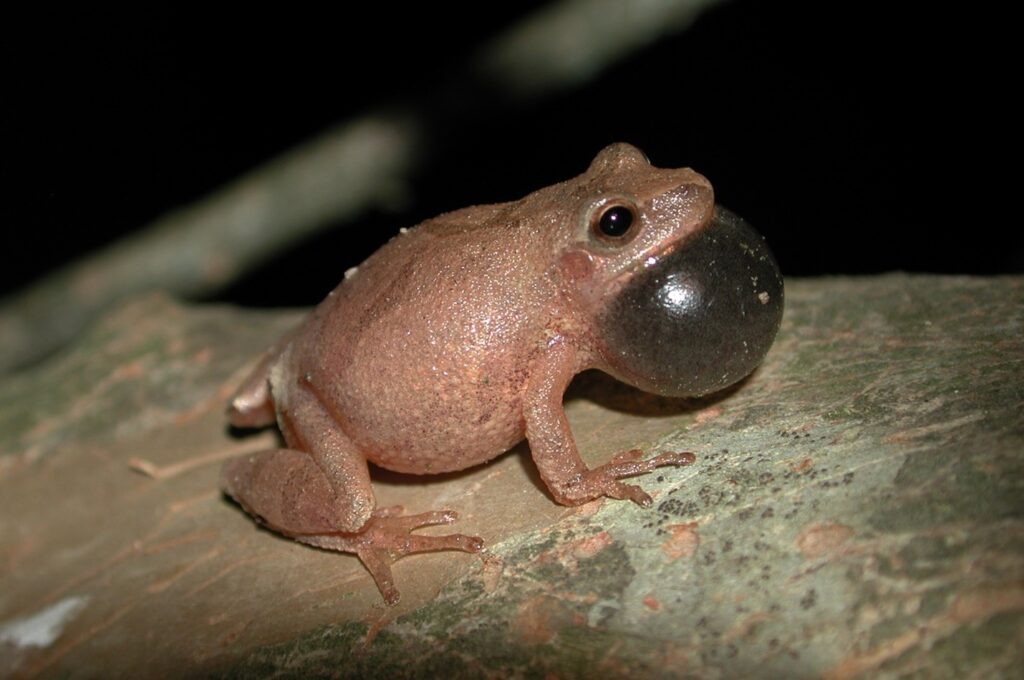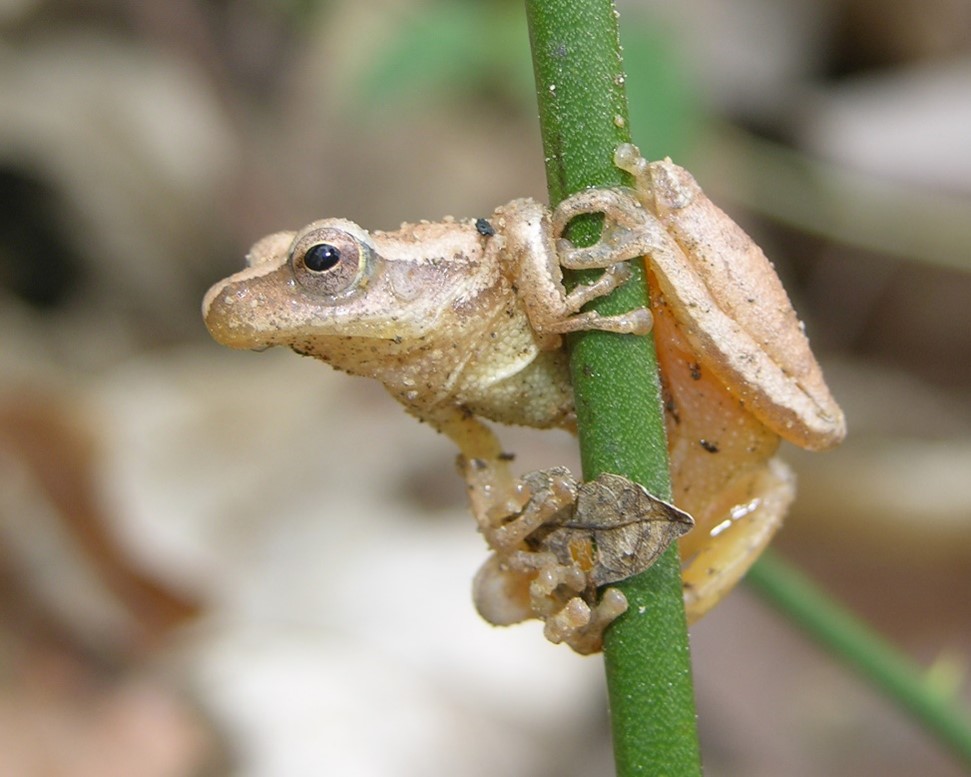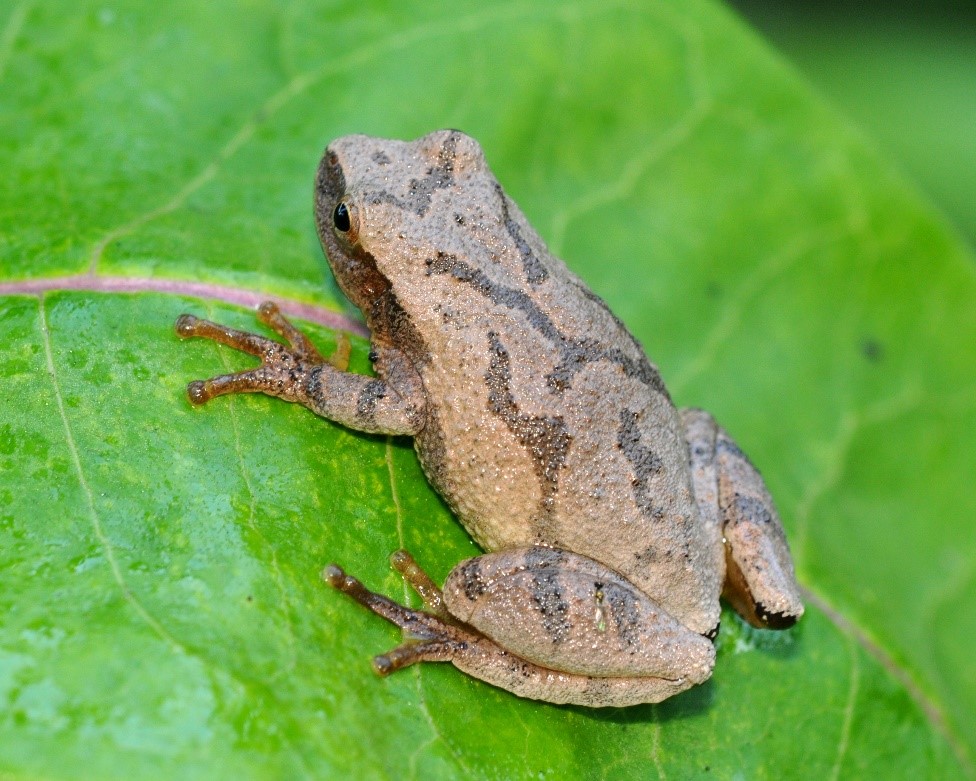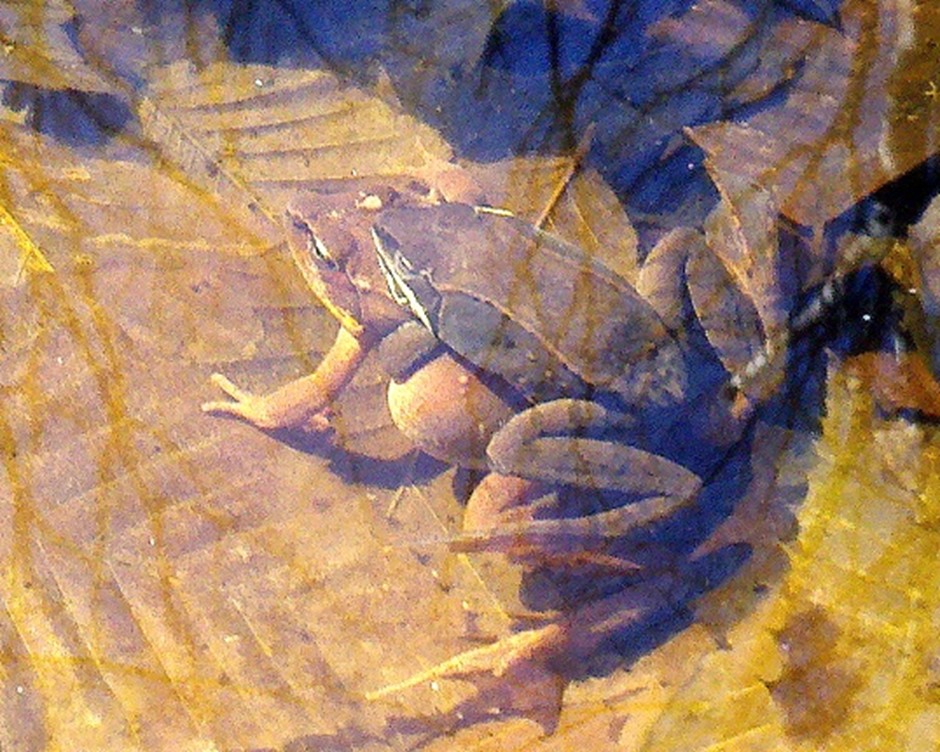By Roger Rittmaster
April 13, 2023
Spring Peepers (Pseudacris crucifer)
The motto of this tiny frog should be, “It’s better to be heard than seen.” Probably everyone in our area, at least those living near a pond or other wetland, has heard the incessant, high-pitched, chirping call of spring peepers . WATCH AND LISTEN HERE. But try to find one! These expert ventriloquists shut up when they feel the vibrations of your steps, but even when they resume, good luck trying to see them.

Spring peepers are found throughout most of the East, as far north as the Gaspe Peninsula and as far south as the Gulf Coast. Around our area, spring peeper males start calling in mid-April. At first, there may be one or two calling, but soon there is often a chorus vying for the attention of females. Interestingly, some males seem not to call, but rely on their vocal brothers to attract females, with whom they then attempt to mate. By early June, the calls usually cease, although a few spring peepers may resume calling in September or October on humid nights (just practicing for the coming year?).

Full grown spring peepers are only about 1 inch long. Their suction cup-like toes indicate that they are a type of tree frog. Although they are capable of climbing trees, they usually stay within a few feet of the ground. They can vary in color from grey to various shades of brown and are most easily recognized by a broken “x” (cross) on their back (sometimes this cross is barely visible). The scientific name “crucifer” refers to this cross, while Pseudacris alludes to the call which might be mistaken for locusts (the Greek word “pseudes” means false and “akris” means locust).

Spring peepers and other frogs mate by a process called amplexus, where the male frog holds on to the back of the female and releases sperm as the female releases eggs, thereby achieving fertilization. Amplexus can last hours or even days. Whereas most frogs lay eggs in clusters, spring peepers eggs are laid singly, attached to vegetation.
Wood frogs in amplexus

After mating, spring peepers leave the water and spend the rest of the spring and summer in nearby woods and shrubs. Whereas the tadpoles feed mainly on algae, adults feed on a variety of small insects and other prey. In the fall, they search for a place to hibernate under logs or other protected areas. In preparation for subfreezing temperatures, they produce high concentrations of glucose which acts as an antifreeze. Spring peepers can survive freezing down to about -8 degrees C.
This recording was obtained in the evening of April 12, 2023 in a wetland near Hodson Park (not Hodson Preserve) on Molyneaux Road in Camden. The loud, high-pitched spring peeper calls contrast with the lower-pitched clucking of wood frogs. LISTEN TO THESE LITTLE GUYS!

